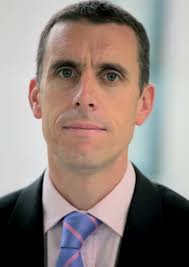Health chiefs in Brighton and Hove are to attend a summit as waiting times in accident and emergency (A&E) remain above target.
Key players at the Royal Sussex County Hospital are due to meet representatives from NHS England, the Care Quality Commission (CQC) and the Trust Development Authority on Wednesday (8 July).
The “Risk Summit” will discuss what is being done in A&E and other departments at the Royal Sussex as well as what is needed from organisations outside the hospital.
The CQC carried out a two-day unannounced inspection of A&E and other wards on the acute floor at the Royal Sussex a fortnight ago. The watchdog is expected to publish a report at the end of this month.

Matthew Kershaw, chief executive of Brighton and Sussex University Hospitals, the trust that runs the Royal Sussex, presented a report at a board meeting this morning (Monday 6 July).
Mr Kershaw said: “The challenges we face on the acute floor and in urgent care are complex, wide-ranging and not unique to us and, unfortunately, there are no quick and easy ways of overcoming them.
“However, we can and need to do more to address them.
“We will use the formal feedback from the CQC and the work of the Emergency Care Intensive Support Team (ECIST), who we also invited in to review our service earlier this month, to build on the work we have already started.”
A report to the board by Rick Strang, the interim director of operations (emergency care), said: “A risk summit has been convened on 8 July where progress on urgent care across the health and social care system will be a key focus of the discussion.
“The trust continues to see unscheduled care as our biggest concern and priority and we will work with colleagues before, during and after the risk summit on this.”
He also said: “While there are areas of good practice and care for patients across the emergency care pathway, the trust still has to improve to secure the levels of performance that patients can expect.
“In particular, while the overall plan for change has been articulated and covers the key areas, there is a view that there remains a lack of pace and some issues of clinical ownership around the requirements for change across the emergency care pathway from the front door of the Emergency Department, through the wards, theatres and specialist units and on into the discharge-facilitating practices at the back door.”
The board was told that performance had improved at the Princess Royal Hospital, in Haywards Heath, which the trust also runs.
But at the Royal Sussex the proportion of A&E patients being seen and treated, admitted or discharged in under four hours remains well below the 95 per cent target for NHS hospitals.
A report to the board said: “A total of 36 patients have experienced waits of over 12-hour breaches from decision to admit since April.”
 It also said: “Formal reporting from the CQC has yet to be received but informal feedback suggests that despite all the work undertaken and planned, the momentum of change in unscheduled care had not been adequately sustained and that there is some disengagement as some staff have commented that they have begun to feel they cannot directly improve the situation to deliver a better service.
It also said: “Formal reporting from the CQC has yet to be received but informal feedback suggests that despite all the work undertaken and planned, the momentum of change in unscheduled care had not been adequately sustained and that there is some disengagement as some staff have commented that they have begun to feel they cannot directly improve the situation to deliver a better service.
“The implications of this and the normalisation of current delivery were central to the CQC informal feedback.
“Therefore, while they acknowledged the work that has been done, they were also clear that the improvements we have made so far have not gone far enough to address some of the issues we face and that we still have a lot more to do to get to where we need to be.
“This is something we had already recognised and the formal feedback when it comes will help us refocus our efforts to make the necessary changes to how we do things.”
At the board meeting the focus was on what could be improved in-house.
But external factors include
- how much money is being paid to the trust to fund “unscheduled care”
- whether ambulances bring too many patients to A&E when they ought to be treated elsewhere
- how easily patients can find medical help when their GP surgery is closed
- how promptly social services and care homes respond when patients are medically fit to be discharged








